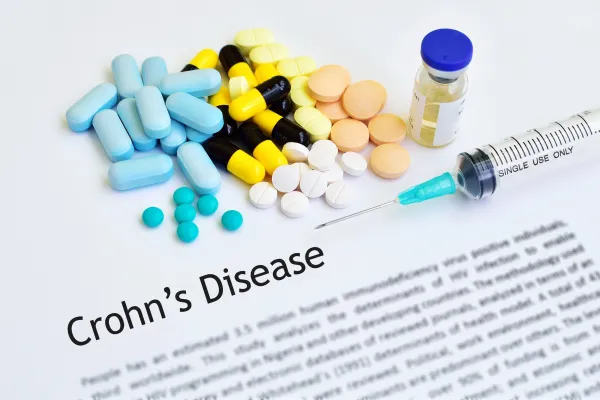Master Abdominal Pain Coding with These 4 Steps

Substantiate symptoms and signs of stomach suffering with this guide. What happens when a patient presents with abdominal pain and your physician documents the symptoms but is unable to come up with a specific diagnosis? Follow this step-by-step guide to report abdominal pain to the highest level of specificity when the diagnosis remains unclear. Step 1: Look to the R Codes when the Disease is Unknown As soon as your physician notes symptoms of abdominal pain without pinpointing a specific disease, you know that it's time to open your ICD-10-CM and turn to Chapter 18, "Symptoms, Signs and Abnormal Clinical and Laboratory Findings, Not Elsewhere Classified." Here, as the note at the beginning of the chapter states, you can find "symptoms, signs, abnormal results of clinical or other investigative procedures, and ill-defined conditions regarding which no diagnosis classifiable elsewhere is recorded." For abdominal pain, that means turning to the R10- (Abdominal and pelvic pain ...) code set, where you can begin to add precision to your reporting. Step 2: Know How Much It Hurts The R10- codes are broken down by severity of pain, with the most painful condition, R10.0 (Acute abdomen), appearing first. From there, ICD-10-CM goes to the more general term "pain" for R10.1- (Pain localized to upper abdomen ...), R10.2 (Pelvic and perineal pain), and R10.3- (Pain localized to other parts of lower abdomen ...), before representing the lowest level of the intensity scale with the R10.8- (Other abdominal pain ...) codes. Example: R10.81- (Abdominal tenderness ...) and R10.82- (Rebound abdominal tenderness ...) use the word "tenderness" in their descriptors. Chelle Johnson, CPMA, CPC, CPCO, CPPM, CEMC, AAPC Fellow billing/credentialing/auditing/coding coordinator at County of Stanislaus Health Services Agency in Modesto, California, offers these useful definitions of tenderness to help you code with precision. Tenderness on its own, she notes, "is pain that occurs when pressure is placed on various areas of the abdomen." Rebound tenderness, on the other hand, is slightly different, "as the patient notes the pain not at the application of the pressure but when the pressure is removed." Step 3: Pinpoint Location, Location, Location Once you've established the degree of pain, the next step is to add the location of the pain. Most of the codes subdivide according to the area of the abdomen where they originate. For example, you can add a fifth character to R10.1- to specify areas such as R10.11 (Right upper quadrant pain) or to R10.3- to specify areas such as R10.32 (Left lower quadrant pain). Similarly, R10.81- breaks out into a sixth character to identify areas like R10.812 (Left upper quadrant abdominal tenderness) or R10.813 (Right lower quadrant ...). Rather than describing the location of the pain, several codes use anatomical terms to describe the pain's position. So, you'll see terms like "periumbilical" - situated near the navel - in the descriptors for R10.33 (Periumbilical pain), R10.815 (Periumbilic abdominal tenderness), and R10.825 (Periumbilic rebound abdominal tenderness). And the term "epigastric," referring to the region of the stomach above the navel and between the upper right and left quadrants (the hypochondriac regions), forms part of the descriptor for R10.13 (Epigastric pain), R10.816 (Epigastric abdominal tenderness), and R10.826 (Epigastric rebound abdominal tenderness). Step 4: Find Associated Factors when Appropriate The last stage of coding for abdominal distress involves knowing what, and what not, to add to your documentation for the clearest possible picture. This could well include adding other, associated codes such as R11.0 (Nausea) or R11.1- (Vomiting ...). But remember to exercise caution when you do add associated codes, as you cannot report some that would appear to go with some R10- codes. So, N23 (Unspecified renal colic) is an Excludes1 for R10- codes; conversely, R10.0- is an Excludes1 for codes in the R19.- (Other symptoms and signs involving the digestive system and abdomen ...) set. Coding caution: Kent Moore, senior strategist for physician payment at the American Academy of Family Physicians, offers the following two pieces of advice. First, Moore notes, "it is important to emphasize that R10 is a 'signs and symptoms' set of codes; if the practitioner makes a definitive diagnosis - for example, appendicitis [K35-K37] - then the more definitive diagnosis should be coded instead." Second, Moore goes on to add that "overlooking the Excludes1 and Excludes 2 notes right after R10 and focusing only on the Excludes notes embedded deeper in the code series," can pose problems for coders. So, it is important not only to pay attention to the Excludes1 note for N23, but also to the Excludes 2 notes for such specific diagnoses as M54.- (Dorsalgia ...) and R14.- (Flatulence and related conditions ...).




